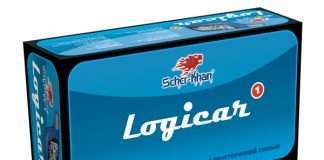The automotive landscape is shifting, and with it, the options for buyers seeking affordable, petrol-powered small hatchbacks are dwindling. However, a promising new model – the upcoming Mazda 2 – could inject fresh life into this segment. The concept car, dubbed Vision-X-Compact, showcases a clean, stylish design and a thrilling 7,700rpm redline, hinting at a compelling offering for those who’s been starved for fresh models.
The Shrinking Field of Petrol Superminis
The decline of the petrol supermini is a direct consequence of broader industry trends. Key players are exiting the market or transitioning to electric power. Ford famously discontinued the popular Fiesta, while Kia has phased out the Rio, and Audi is discontinuing its A1. This leaves fewer choices for consumers looking for a small, affordable, and traditionally-powered vehicle.
Why Are Manufacturers Pulling Out?
Ford CEO Jim Farley recently highlighted the challenges of succeeding in the “B-car” (supermini) business. He stated that it requires either substantial government support or a large, global scale. The center of the market for these vehicles isn’t Europe, but rather South America, Africa, and the Middle East, where production costs are significantly lower. Ford, like many manufacturers, found that investment in superminis simply couldn’t deliver a sufficient return compared to other markets.
Making a profit on superminis has long been notoriously difficult, even before the current era of rampant cost inflation.
The pressure on manufacturers is compounded by increasing regulatory costs. Renault estimates that European safety and emissions regulations have increased the price of a new Clio by a staggering 40% over the past 15 years. While a new, hybrid-petrol Clio is on the way, it won’t be available in the UK until 2027.
The Electric Transition’s Impact
The industry’s rapid shift towards electric vehicles has further reduced the availability of combustion-powered superminis. Engineering decisions made around three years ago prioritized EV development, resulting in some popular models being offered only in electric form. Opel’s Vauxhall Corsa and its Peugeot 208 counterpart, built on the same platform, are examples of this trend. As a result, existing models will receive updates and remain on sale alongside the new EVs.
Extending the Lifespan of Existing Models
Volkswagen Group is adopting a strategy of extending the lives of its existing superminis—the Seat Ibiza, Volkswagen Polo, and Skoda Fabia—to avoid phasing them out entirely. Skoda boss Klaus Zellmer explained that while the plan was to introduce the electric Epiq in 2027, the shift hasn’t materialized as anticipated. The extended lifespan allows manufacturers to delay costly re-engineering and continue serving customers who prefer traditional powertrains.
Mazda’s Potential to Fill the Gap
The current Mazda 2 shares its underpinnings with the Toyota Yaris and is exclusively offered as a hybrid. However, the Vision-X-Compact concept offers a significantly more distinctive and appealing design. If the production version arrives in Europe with a petrol engine option, it would provide a welcome addition to the supermini market and cater to consumers who desire more choice.
The upcoming Mazda 2 represents a potential lifeline for the petrol supermini market, offering a compelling alternative as other manufacturers consolidate around electric vehicles

































